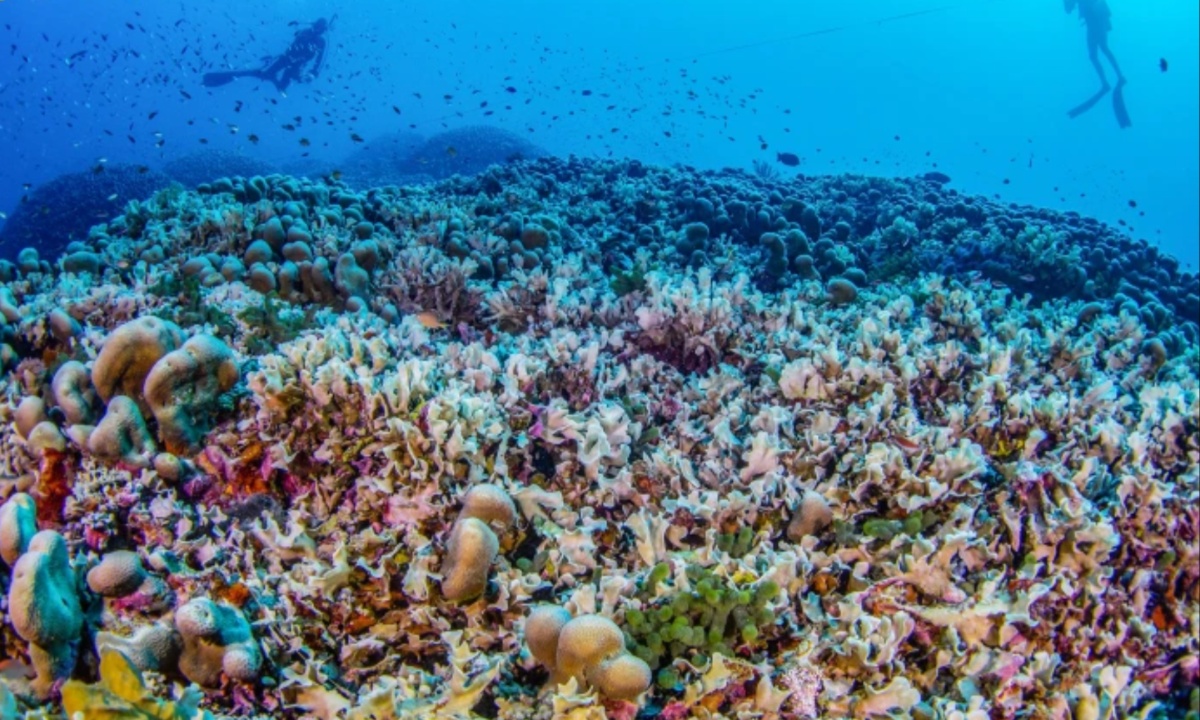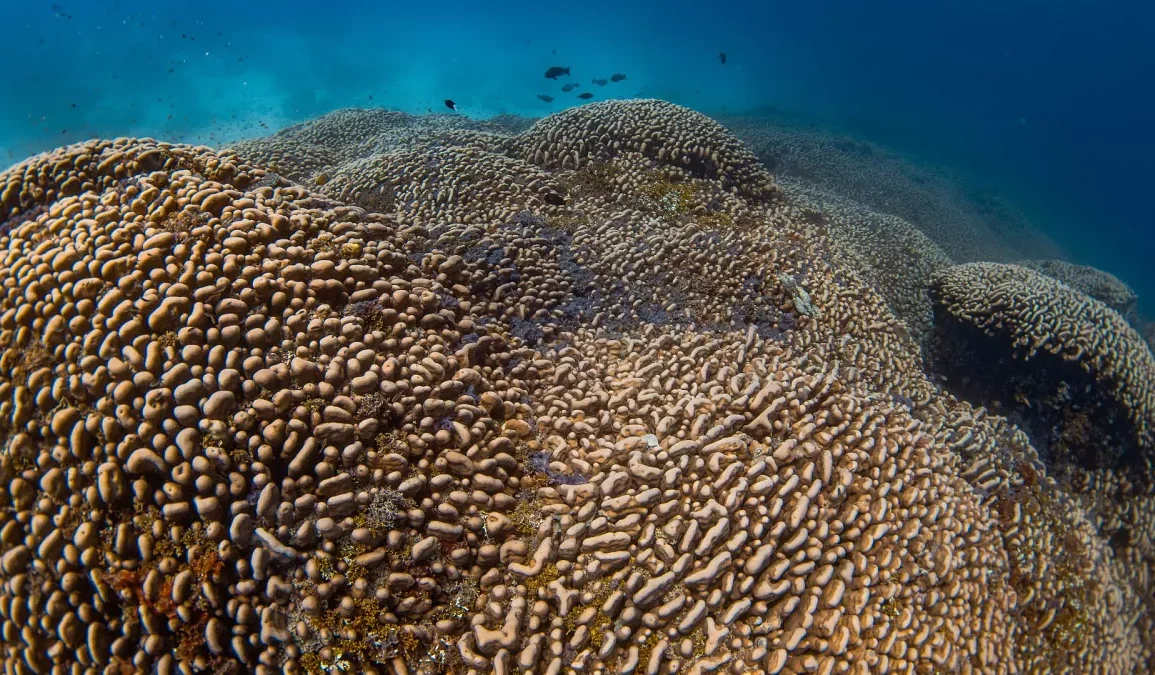A groundbreaking discovery has been made in the southwest Pacific Ocean: the world’s largest coral. This colossal coral, at least 300 years old, was identified by scientists during an expedition in the Solomon Islands organized by the National Geographic Pristine Seas program.
Measuring over 100 feet long, it is three times larger than the previous record-holder in American Samoa and exceeds the length of a blue whale. Unlike coral reefs, which are made up of multiple colonies, this coral is a single specimen that has grown continuously for centuries.
The discovery was made possible by a team of scientists who initially mistook the coral for a shipwreck due to its vast size. Marine biologist Manu San Félix, who dived to examine it, described it as “close to the size of a cathedral.”
Upon further investigation, satellite images confirmed the coral’s enormity, which is visible from space. Its surface is a complex network of polyps, tiny creatures that have built up over centuries, with striking hues of purple, yellow, blue, and red. The coral also hosts a variety of marine life, including fish, crabs, and shrimp.
The coral is not only a biological marvel but also a living record of ocean conditions over hundreds of years. Its enormous size posed challenges for the researchers, as their measuring tapes were too short to span its full length.

Despite its awe-inspiring beauty and ecological importance, the discovery comes with a sobering reality. Corals face a growing number of threats, both from local factors such as overfishing and pollution and from global challenges like climate change, particularly rising ocean temperatures and coral bleaching.
The announcement of the mega coral has been met with mixed emotions. On the one hand, it represents a significant achievement in marine science and has the potential to draw attention to conservation efforts in the Solomon Islands, potentially benefiting local tourism and research.
On the other hand, the coral remains highly vulnerable to the ongoing climate crisis. Scientists are particularly concerned about the warming of the oceans, which is causing widespread coral bleaching. More than 40% of warm-water reef-building coral species are now at risk of extinction, a trend exacerbated by fossil fuel-driven climate change.
However, the survival of this massive coral offers some hope. Experts suggest that it illustrates that, under the right conditions, corals can still thrive despite the accelerating impacts of climate change. The Solomon Islands and the surrounding “Coral Triangle” region, known for its biodiversity, may offer a more resilient environment for corals.
The discovery underscores the urgency of global efforts to address climate change, particularly in poorer countries, as global leaders gather at COP29 to discuss funding and strategies for climate adaptation and mitigation.

